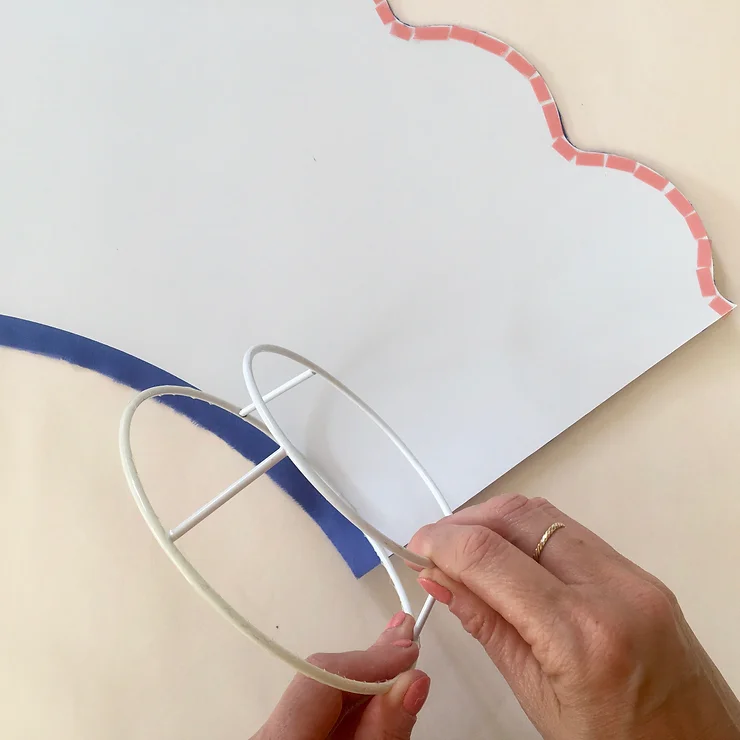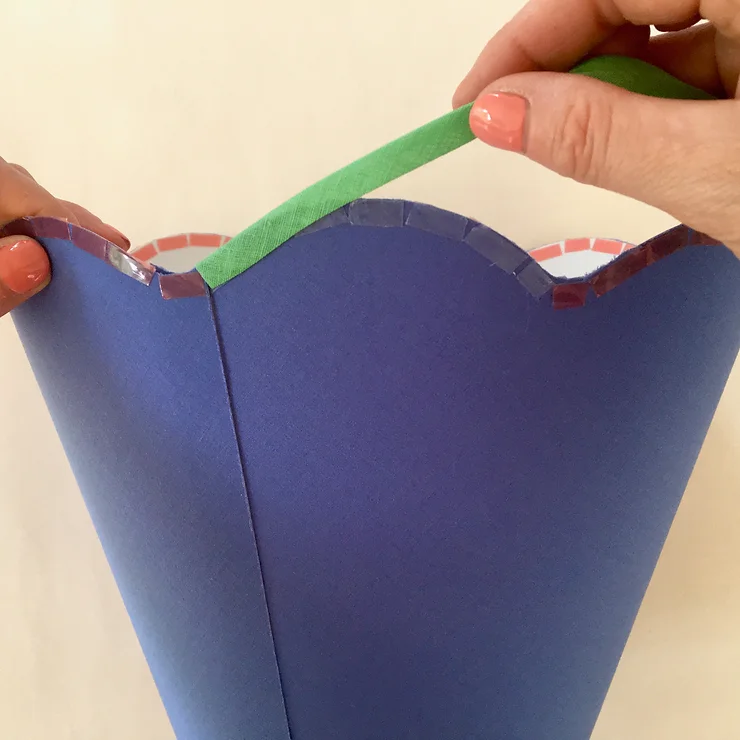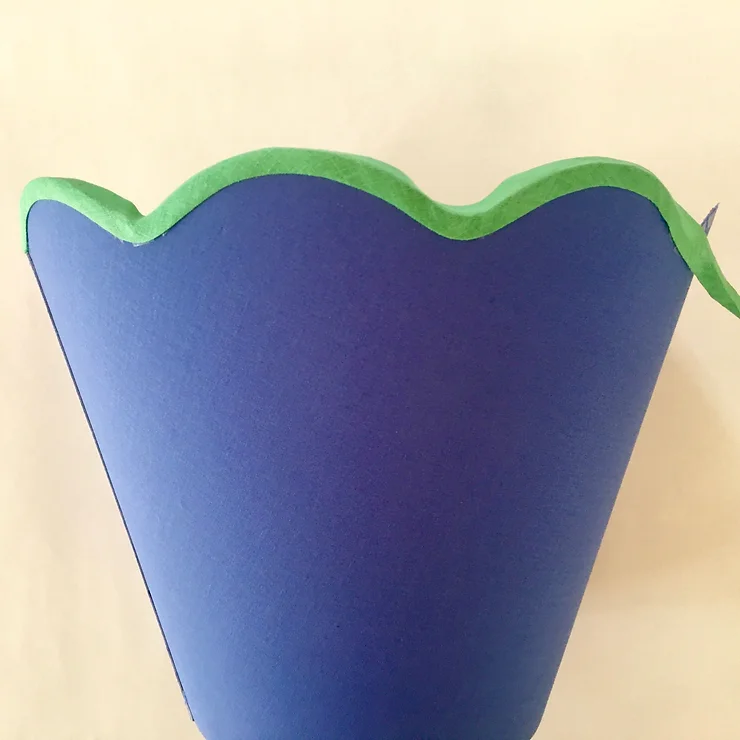New Product - How to Make a Paper Scalloped Edge Lampshade
- Dannells Admin

- Mar 28, 2024
- 4 min read
Updated: Apr 24, 2024
Get ready to elevate your home with the hottest trend of the moment – scallops! We're excited to introduce you to NEW Scalloped Edge Self Adhesive Lampshade Panel, helping you to create stunning lampshades that perfectly complement your interior style.
Whether you choose paper, wallpaper, or fabric, our Scalloped Edge Self Adhesive Lampshade Panels, in a range of four different sizes, allow you to create a unique version of this lampshade trend.
We'll show you in this post, just how easy it is to make a crisp paper Scalloped Edge Lampshade, with our easy step-by-steps and tips. Say hello to chic and personalised lampshades that add a touch of elegance to any room!

What’s you'll need to make a paper Scalloped Edge Lampshade
1 x Scalloped Edged Self-Adhesive Lampshade PVC Panel - choose from 12.5cm, 15cm or 20cm top ring diameter or a Candle Clip panel
1 x Duplex Ring, either 12.5cm, 15cm or 20cm or a Candle Clip Ring
1 x Rolled Edge Tool or old loyalty card
Covering of your choice - wallpaper or paper (for size, see table below)
Scissors for cutting tape
Pencil
Shade Carrier or Spider Fitting (to fit Duplex Ring)
Seam Roller - optional
Craft knife - optional
Clean, flat working surface

Papers for Lampshade Making
When thinking about what type of paper to use for lampshade, the easiest papers to work with are craft papers which are around 90-100 gsm and those up to around 250- 300 gsm, which for example is the equivalent weight of a magazine cover. Wallpapers also work well, but those with embossing or vinyl can be heavier so consider the weight of the wallpaper and how this will impact your lampshade. For this tutorial, we used wrapping paper, which we'd advice using if you have some lampshade making experience.
How to make your paper Scalloped Edge Lampshade
1. Remove the kiss cut at the top of the shade and carefully set to one side.


2. Cut away the backing paper from the top edge of the lampshade panel.

3. Cut down your paper down to a workable size. Place your Scalloped Edge Panel right side down and position the panel backing paper side down on top, ensuring you leave at least a 2cm gap between the top curved edges and the top of the paper.

4. When you’re happy with placement peel back approximately 5 -10cm of the release paper and stick on to your covering.
Tip: Use a weight such as tin to stop the panel from moving.

5. Smoothing out from the middle, press the adhesive firmly onto the paper pulling away until all the release paper is removed.

6. Taking the kisscut you removed in Step 1 and place the short edges together, sticky facing inwards. Position the half curve along the top curve, lining up the short edge with the straight edge of the panel. With a pencil draw a line along the edge, the repeat on the opposite side.


7. Cut along the top drawn and along the straight side of the panel, using the edge of the panel as your guide.


8. To cut the scallops, snip into the paper between scallops, then cut carefully along the edge of the PVC.


9. Apply 9mm double-sided tape to one side of the PVC panel, which will become the seam.

10. Apply 9mm double-sided tape to the largest aperture of the duplex ring. Apply evenly to avoid creases. Press the tape onto the ring evenly and firmly. Remove the release paper.


11. Remove the release paper from the tape on the seam. Place the ring on the top edge of the PVC panel, not on the paper. Start to roll the ring towards the seam edge.
Tip: Keep the ring in line with the PVC edge throughout. If you deviate, roll back and correct. Tilting the ring towards the top of the shade will help.


12. At the seam, ensure the two panels overlap each other to create a continuous scallop pattern.

13. Place the lampshade on a hard surface, with the seam down and apply pressure with your hand to close. If you have a seam roller this can help secure the seam.

14. Snip the paper in line with the struts on the ring, with the tips of the scissors, to allow the fabric to be folded behind. To release the tension in the paper snip the paper between the struts too.


15. At the top, push the paper towards the inside of the lampshade and adhere it to the rings.

16. Use the rolled edge tool or a loyalty card, gently push the paper under the ring. Use small strokes pushing along the length of the frame to avoid damaging the paper. Alternatively cut away the paper using a craft knife.

17. Voila - You've made your very own Scalloped Lampshade!
Fabric or Paper?
Our Scalloped Edge Lampshade Making Panels can be made in a wide range of coverings, and to make this in paper we recommend this project for lampshade making beginners upwards. If you would like to test your skills, hop over to our blog post on how to make a fabric bias bound Scalloped Edge Lampshade, in fabric.
#scallopedlampshade #scallopshade #DIYScallopedlampshade #scallopedlampshadepanel #newproduct #interiortrend #scallops #professionalskills #lampshademaking #lampshademaker #DIYtutorial #stepbystep #interiordesign #lampshademakingskills #DIYshadetutorial #lampshadehacks #creativeshades #hacks #tutorial #tipsandtricks #handmadeshade #uniquelampshadedesign #DIYlampshade #lampshadeknowhow #uniquelampshadedesign
(small).jpg)









Comments